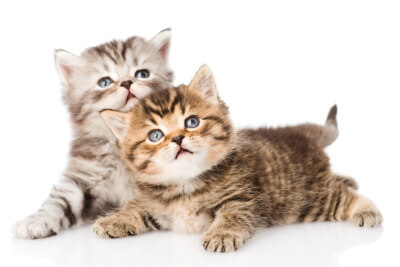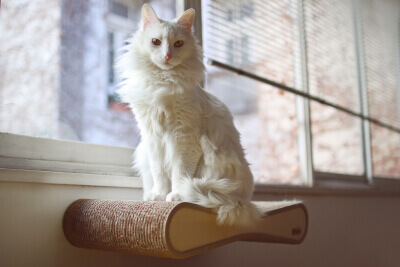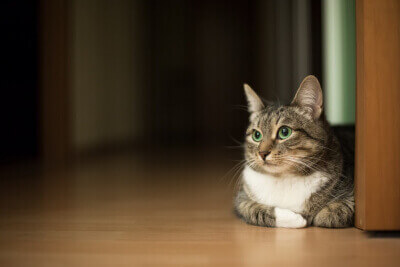Bringing home a new kitten is one of life’s most heartwarming experiences. These tiny, playful furballs are full of energy, curiosity, and affection. But behind all that cuteness is a need for structure, care, and preparation. Just like babies, kittens require a safe environment, appropriate nutrition, and mental stimulation to thrive. If you’re adopting a kitten, your journey as a responsible pet parent starts before they even arrive home.
This guide covers everything you need to prepare for your kitten’s arrival, from essential supplies like food and litter to comfort items like beds and scratching posts. By organizing these items ahead of time, you create a safe, welcoming space that supports your kitten’s development and well-being.
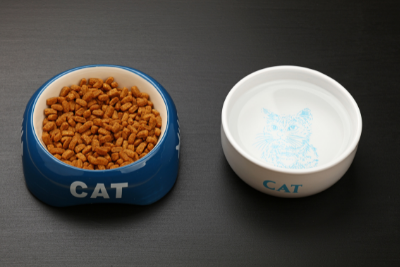
1. Food and Water Bowls
Choosing the right food and water bowls may seem minor, but it has a big impact on your kitten’s comfort and hygiene. Kittens need shallow, easy-access bowls so they can eat and drink without straining their tiny necks or whiskers. Bowls made from stainless steel or ceramic are highly recommended, as they’re easy to clean and don’t harbor bacteria like some plastic materials can.
Avoid placing the bowls near the litter box. Cats prefer their eating and toileting areas to be separated. Choose a quiet location away from high-traffic zones where your kitten can eat without being disturbed. If you’re introducing your kitten into a multi-cat home, it’s important that they have their own dishes — at least at first — to avoid resource guarding or stress.
When it comes to water, some cats prefer running water. A small pet fountain may encourage kittens to drink more and stay hydrated. Always wash bowls daily and refill with fresh water to ensure hygiene. If you’re planning to use automatic feeders or water dispensers in the future, wait until your kitten is fully adjusted before introducing them. Simplicity is key in the first few weeks to help them settle in smoothly.
2. Kitten-Specific Food
Nutrition plays a vital role in a kitten’s growth, immune development, and overall health. Kittens require more protein, fat, and calories than adult cats, so feeding them food specifically formulated for kittens is essential. These specially designed formulas contain the essential nutrients needed to support the development of strong bones, muscles, and organs.
Kitten food comes in both dry and wet varieties. Wet food provides hydration and is easier for kittens to chew, especially during teething. Dry kibble, on the other hand, helps with dental development and can be left out longer if free-feeding. Most veterinarians recommend a combination of both to meet the needs of hydration and nutrition.
When selecting a food, check the label to ensure it meets the AAFCO nutritional standards for kitten growth. Avoid any food that includes artificial fillers or unrecognizable ingredients. Introduce new food slowly, especially if you’re switching from what the shelter or breeder was feeding. Rapid changes in diet can upset their stomach.
Stick to a feeding schedule — typically 3 to 4 small meals a day until they are about 6 months old. Always consult your vet for personalized recommendations based on breed, size, and health. A healthy diet early on builds a strong foundation for a healthy adult cat.
3. Litter Box and Supplies
Start with a simple, low-sided litter box so your kitten can easily climb in and out. As they grow, you can transition to a larger or covered box if preferred. Avoid covered boxes at first since they may feel too enclosed and can discourage use.
Choose an unscented, clumping litter to begin with. Strong scents may overwhelm a kitten’s sensitive nose. Place the box in a quiet, accessible area, away from food and high-traffic areas. Kittens instinctively know how to use a litter box, but accidents can still happen during the adjustment period. Positive reinforcement and consistency will help reinforce good habits.
In addition to the litter box, you’ll need a scoop, a mat to trap litter, and cleaning supplies. If you’re using liners, make sure they’re securely attached to avoid clawing or bunching. For multiple cats, follow the golden rule: one litter box per cat, plus one extra.
4. Kitten Bed or Sleeping Area
Kittens sleep an average of 16–20 hours a day, so a cozy, safe sleeping spot is a must. While your kitten may eventually nap anywhere, providing a dedicated bed gives them a place to feel secure and call their own. Look for soft materials with raised edges or a cave-style bed to simulate the warmth of their mother and littermates.
Choose a location that’s quiet, warm, and away from loud household activity. If possible, place the bed in a room where your kitten can feel safe during the first few nights. Avoid moving it around too often, as consistency helps build comfort.
Add a blanket, towel, or even a worn shirt that smells like you to provide emotional comfort. The scent helps reduce anxiety, especially if the kitten has been recently separated from its mother or littermates.
While a bed isn’t strictly necessary (they might still nap in boxes or under couches), having one shows your kitten that this is their space. Over time, it becomes a core part of their daily routine. For owners who want to upgrade, a small pet house or heated pad can be introduced later for additional comfort, especially during colder seasons.
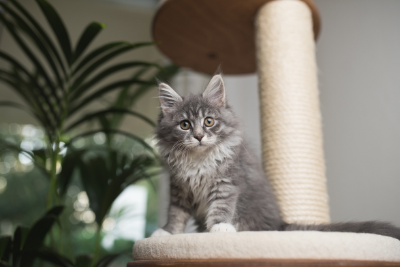 5. Kitten Toys for Mental and Physical Development
5. Kitten Toys for Mental and Physical Development
Play is essential for your kitten’s development. Through play, kittens learn coordination, hunting skills, confidence, and how to interact with their environment. Without regular stimulation, they may become bored, anxious, or destructive. That’s why having a variety of age-appropriate toys is a must.
Start with lightweight toys that your kitten can easily bat around, such as fabric mice or soft crinkle balls. Wand toys with feathers or strings offer interactive fun and strengthen your bond. Puzzle toys can stimulate your kitten’s mind, especially when paired with treats or kibble.
Rotate your kitten’s toys every few days to keep them engaged. Having too many toys at once can be overwhelming, while having too few can become boring quickly. Observe your kitten’s preferences — some love to chase, others prefer stalking or hiding.
Avoid toys with small, detachable parts or anything that can be swallowed. Strings, ribbons, and rubber bands should only be used under supervision, as they pose choking or digestive hazards.
Make time for multiple short play sessions each day, especially before mealtimes. Play mimics hunting behavior, helping to build structure into your kitten’s daily routine and naturally tire them out for restful naps afterward.
Also Read: What Are The Best Cat Toys?
6. Grooming and Hygiene Tools
Starting a grooming routine early helps your kitten become comfortable with being handled, which will make future care easier for both of you. Even though kittens are excellent self-groomers, routine maintenance is still necessary to keep them healthy and clean. A soft-bristled brush or grooming mitt is ideal for short-haired kittens, while longer-haired breeds may require a comb or slicker brush to prevent tangles and matting. Grooming helps reduce shedding, prevents hairballs, and strengthens your bond.
Nail trimming should also start young. Use cat-specific clippers and only trim the sharp tips — never the quick ones. If you’re unsure, ask your vet or a professional groomer for a demonstration.
Other helpful tools include pet-safe wipes for spot cleaning, a small feline toothbrush and toothpaste, and a gentle ear cleaner. Dental care may seem advanced, but it’s easier to build the habit early.
Keep all grooming supplies in one designated area and use treats to establish positive associations. Never force grooming — start with short sessions and gradually increase the duration. If your kitten shows signs of discomfort or distress, stop and try again later.
Also Read: How Much Does It Cost to Groom a Cat?
7. Collar and ID Tag for Safety
Even if your kitten will live strictly indoors, having a collar and ID tag is a simple safety measure that could make all the difference in an emergency. Indoor cats can and do escape — whether it’s through an open window, during a move, or through sheer curiosity. A tag provides anyone who finds it with an easy way to contact you.
Choose a breakaway or safety collar specifically made for kittens. These are designed to snap off if your kitten gets stuck, reducing the risk of injury. Avoid collars with bells for very young kittens, as the constant jingling can be overstimulating.
Your ID tag should be lightweight and include:
- Your kitten’s name
- Your phone number
- Optional: address or “microchipped” tag if applicable
Make sure the collar fits snugly but comfortably — you should be able to slip two fingers under it. Check the fit regularly as your kitten grows.
If you plan to leash-train your cat later on, you’ll want to purchase a separate kitten harness, but don’t introduce it until your kitten is fully comfortable wearing a collar. This small investment in identification can be a lifesaver if your kitten ever finds themselves outside or in unfamiliar surroundings.
8. Scratching Posts and Pads
Scratching is not a behavior problem. It’s a natural and essential activity for kittens. It helps them keep their claws healthy, mark territory, stretch their muscles, and release stress. Providing appropriate scratching surfaces will save your furniture, rugs, and curtains from destruction.
Start by offering a variety of scratching options to discover your kitten’s preferences. Some kittens love vertical posts, while others prefer horizontal pads or inclined surfaces. Sisal, cardboard, and carpet-covered posts are all great options.
Place the scratching posts in visible areas, particularly near your kitten’s favorite nap spots. Cats often stretch and scratch when they wake up. You can also place a scratcher near furniture they seem drawn to as a preventative measure. Encourage use by gently guiding their paws or using catnip (if they’re old enough to respond to it). Never punish scratching — instead, redirect and reward.
A scratching post doesn’t have to be a boring piece of cardboard. Many come as part of cat trees, which offer climbing and perching spots too — perfect for energetic, curious kittens. With consistency, your kitten will learn where it’s appropriate to scratch and begin building healthy habits early on.
9. Carrier or Travel Crate
A sturdy, well-ventilated carrier is one of the most important — and most often overlooked — essentials for new kitten owners. Whether you’re taking your kitten to the vet, moving to a new home, or introducing them to car travel, a safe carrier keeps your kitten protected and secure.
Opt for a small, enclosed carrier that’s easy to clean and easy to open. Hard plastic carriers with front and top openings are generally preferred for their ease of access and durability. Soft-sided carriers can work for short trips, but they’re better suited for calm or older cats. In addition, make the carrier a positive space by leaving it open in your home with a blanket or toy inside. Allow your kitten to explore at its own pace, and never force it inside unless necessary. Over time, they’ll begin to associate the carrier with safety rather than fear.
If your kitten panics during travel, consider lining the carrier with a familiar-smelling item or using a synthetic pheromone spray designed to reduce anxiety. Proper carrier training will pay off every time your kitten needs to travel, helping prevent stress-related issues and making routine vet visits far less traumatic.
10. Cleaning Supplies for Accidents and Hygiene
Kittens are naturally clean, but that doesn’t mean messes won’t happen. Litter spills, food crumbs, hair, and the occasional accident are all part of the experience. Having a dedicated set of cat-safe cleaning supplies on hand will help you keep your home fresh and your kitten safe.
Start with an enzyme-based cleaner designed for pet messes. These products break down organic material at a molecular level, eliminating both stains and odors — not just masking them. Regular household cleaners often contain chemicals or fragrances that are toxic to cats, so be sure to choose products labeled pet-safe.
Other cleaning essentials include:
- Paper towels or microfiber cloths
- A small handheld vacuum or broom for litter tracking and fur
- Disposable gloves for accident cleanup
- Lint rollers or pet hair removers for clothing and upholstery
If you’re not using a self-cleaning litter box, a good litter scoop and disposal bin are must-haves. Clean your litter box area daily to prevent buildup and odor.
Establishing a routine for cleanliness — such as wiping up spills immediately or cleaning bedding weekly — will help maintain a healthy environment. It also provides your kitten with consistent sensory cues that this is a safe and stable space to grow up in.
A Happy Kitten Starts With a Prepared Owner
Bringing home a kitten is a joyful experience, but it’s also a big commitment. By preparing your home with all the essentials, you give your new fur baby the best possible start. Build a safe, engaging, and loving environment that supports your kitten’s growth from day one. And remember: the time, effort, and care you invest now will pay off for years in companionship and cuddles.


